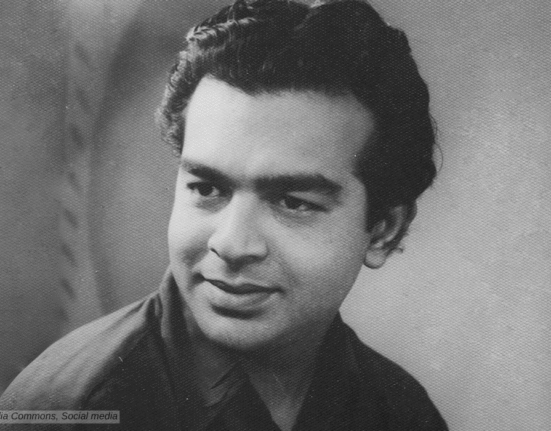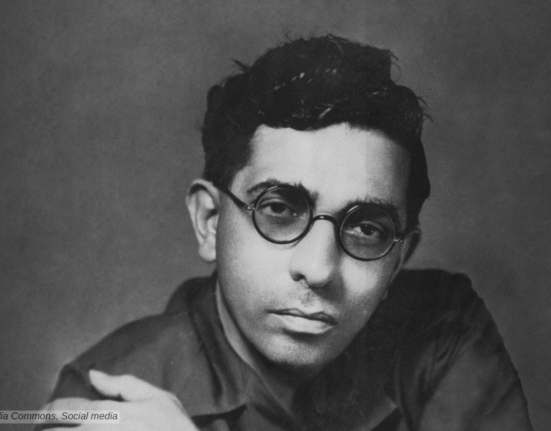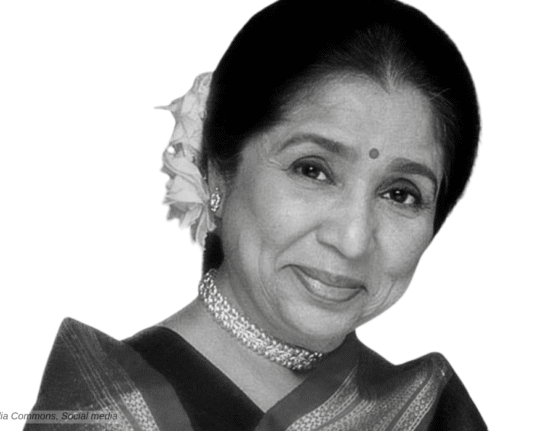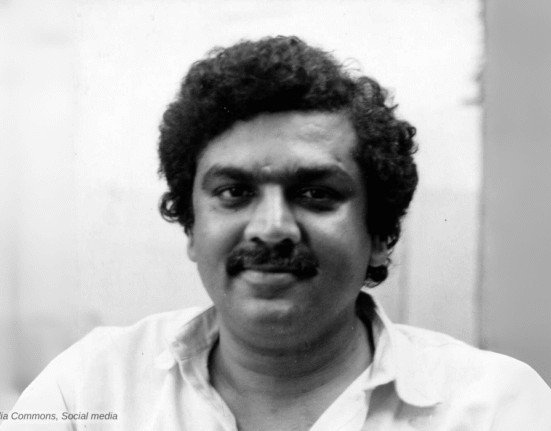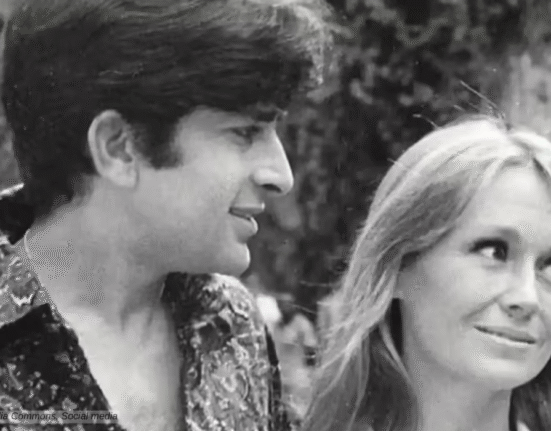Begum Para was a trailblazer personality known for her fearless choices and bold persona, both on and off-screen. She was also celebrated for her captivating beauty and uninhibited spirit as she redefined glamour during the 1940s and 50s.
Early Life
Begum Para was born Zubeda Ul Haq on December 25, 1926, in Jhelum, Punjab (now in Pakistan), into a Punjabi Muslim family. Her father, Mian Ehsan-ul-Haq, was a judge from Jalandhar who later became the chief justice of the highest court in the princely state of Bikaner, now part of Rajasthan. Her family settled in Aligarh, when she was very young. Begum Para was brought up in a disciplined yet liberal environment. She completed her education at Aligarh Muslim University.
Her sister Zarina Sultan was the mother of Rukhsana Sultan, who was a close aide of Sanjay Gandhi and the mother of Amrita Singh. Begum Para’s other sister, Sadia Pirzada, married Abdul Hafeez Pirzada. Pirzada later become the law minister of Pakistan. He also credited as the principal draughtsman of the Constitution.
Her elder brother, actor Masrurul Haq married famous Bengali actress Protima Dasgupta. Their glamorous lifestyle greatly inspired Begum Para. Encouraged by her sister-in-law, she embraced the opportunities and decided to pursue a career in acting, marking the beginning of her journey in Indian cinema.
Debut and Stardom

Begum Para made her film debut in 1944 with the film “Chand,” produced by Prabhat Studios in Poona (now Pune). Directed by D.D. Kashyap, the film starred Prem Adib as the hero and Sitara Devi as the vamp. “Chand” was a commercial success, and Begum Para gets rave reviews for her performance.
Following the success of “Chand,” Begum Para starred in Protima Dasgupta’s “Chhamia” (1945), a film based on the novel “Pygmalion.” The film’s success further established Begum Para as a talented actress. Despite her success, she often faced typecasting as a glamour doll due to her bold and modern persona. She later did Protima Dasgupta’s Jharna in 1948 and Pagle in 1950.
Directed by Kidar Sharma, “Neel Kamal (1947)” featured Begum Para alongside Raj Kapoor and Madhubala. She got especial parise for her powerful performanceas the fearless princess. The film remains a classic in Indian cinema, because of people associated with it.
Begum Para – The bold and Beautiful
In Suhaag Raat (1948), Begum Para played the lead role opposite Bharat Bhushan. Directed by Kidar Sharma, the film was a commercial success and showcased her versatility as an actress.
She also acted in many memorable films like Roop K. Shorey’s Shalimar (1946), Lal Muhammad’s Sohni Mahiwal (1946), Kedar Sharma’s Duniya Ek Sarai (1947), Sibtain Fazli’s Mehandi (1947), Kishore Sharma’s Zanjeer (1947), K. Amarnath’s Meharbani (1950), Sheikh Mukhtar’s Ustad Pedro (1951), and “Laila Majnu (1953),” and Murtaza Changezi’s Nazaria (1952).
Begum Para’s bold and vivacious screen presence made her a favorite among filmmakers and audiences alike. She starred in several successful films during the 1940s and 1950s, earning a reputation as one of Bollywood’s leading actresses.
Later Career
Some of her later films include Naya Ghar (1953), Dara (1953), Pehli Jhalak (1954), Jalwa (1954), Lutera (1954), Sau Ka Note (1955), Shahzada (1955), Sitara (1955), Duniya Gol Hai (1955), Kar Bhala (1956), Kismet Ka Khel (1956), Aadmi (1957), and Do Mastane (1958).


Reportedly, she was also offered the role of ‘Bahar’ in K. Asiff’s Mughal-e-Azam (1960), which she declined. The role later went to Nigar Sultana.
After a hiatus of almost 50 years, Begum Para made a comeback with Sanjay Leela Bhansali’s “Saawariya (2007).” She played the role of Badi Ammi, Sonam Kapoor’s grandmother. Her performance was widely appreciated, and the film marked a fitting end to her illustrious career.
Personal Life
Begum Para married actor Nasir Khan, the younger brother of cinema legend Dilip Kumar, in 1958. The couple had three children, Lubna, Nadir, and actor Ayub Khan. In 1974, the couple decided to venture into production and started working on the film “Zid” with Sanjay Khan and Saira Banu. Nasir Khan planned to to direct the film himself.
On the way back from Dalhousie (Himachal Pradesh) after a location hunt, Nasir Khan had a massive heart attack. He passed away in May 1974 at the age of 50, leaving Begum Para to raise their children on her own.
After Nasir Khan’s death, she moved to Pakistan to be with her family there. She moved back after some time. Begum Para passed away on 9 December 2008 at the age of 81.
Begum Para is known for her bold and glamorous persona and versatile acting skills, as well as her ability to break stereotypes. She was considered India’s first pinup girl after her photographs, taken by photographer James Burke, were published in America’s popular Life magazine in 1951. Her fame spread internationally, and she became a symbol of glamour and modernity in Hindi films.
Begum Para on IMDB




